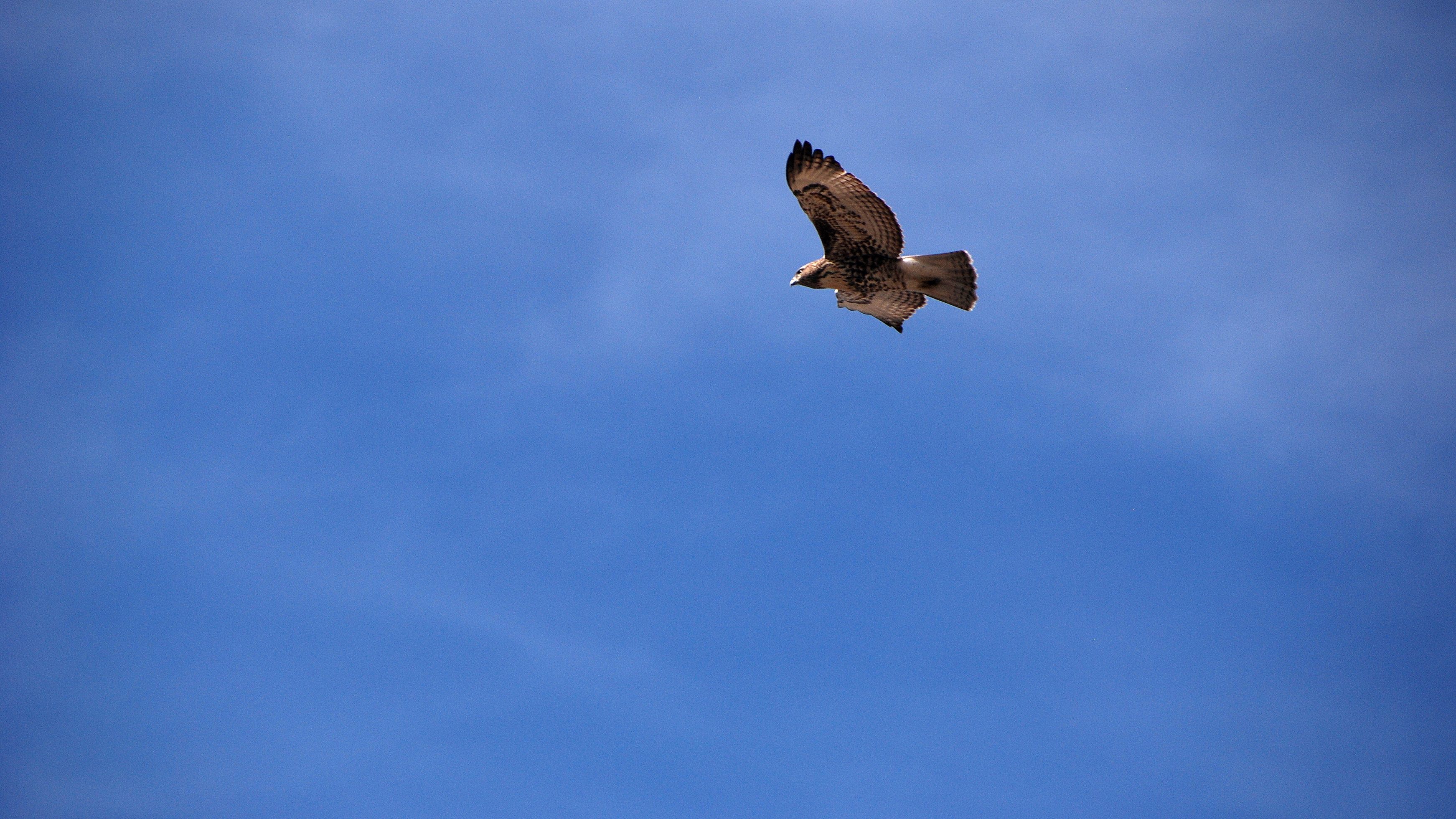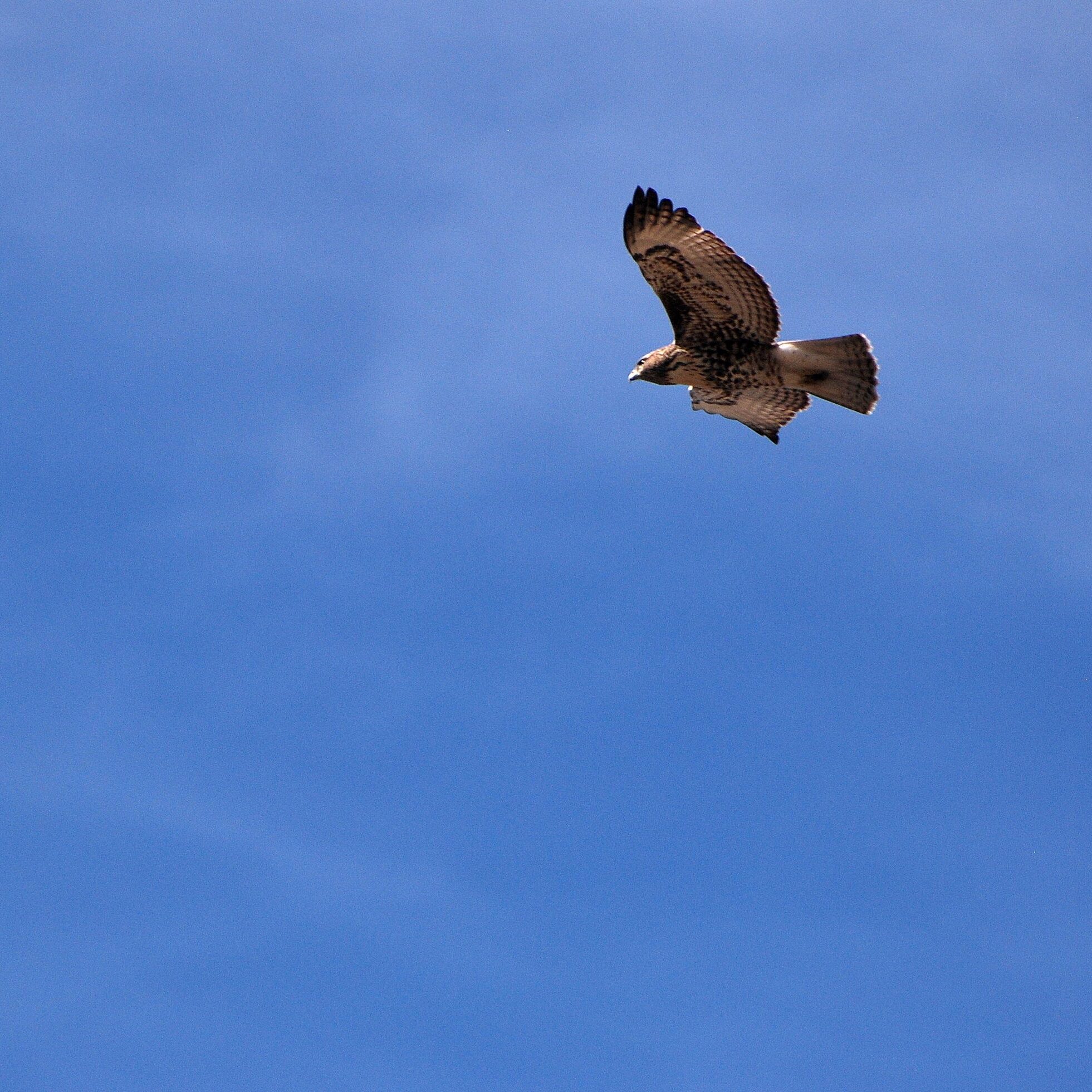Wildlands Need Your Help
Please take five minutes to submit comments on proposed National Forest Climbing Directives at: https://cara.fs2c.usda.gov/Public/CommentInput?project=ORMS-3524
The USFS is proposing guidelines to address impacts from increased climbing on public lands and use of fixed anchors in wilderness. Climbing groups have played an outsized role in shaping these guidelines and claim those who want to manage bolting are “anti-climbing”, a calculated misrepresentation of the truth. Many climbers love navigating complex vertical terrain without the use of fixed anchors, a style called traditional climbing. The issue is an explosion of unregulated “vertical” trails that impact cliff-dwelling species, damage cultural sites, or degrade wilderness character. You can support traditional climbing and management of fixed anchors!
Not sure what to say? We suggest the following improvements to the proposed guidance. Put comments in your own words; the more personal, the better. It helps to draft comments in a document that can either be copied/pasted into the portal’s narrative section or attached as a separate document.
- Ask that moratoriums be immediately put in place for new fixed anchors until National Forests complete Climbing Management Plans (CMPs) and Minimum Requirements Analysis (MRAs). Much of the proposed guidance and sideboards are reasonable but then made contingent on “available” funding. If funding for baseline inventories, CMPs, MRAs, or authorization systems is not available, climbers are free to install fixed anchors, even intensely bolted sport-climbing areas, wherever they want. An immediate moratorium does not require funding and would halt further impacts until funding is available.
- Say that installing fixed anchors on public lands should require an authorization permit, much the same as you get for firewood cutting, Christmas trees or picking mushrooms. Even the Forest Service can’t build a trail without a process to evaluate potential resource impacts or use conflicts. Having site-specific baseline inventories and an authorization process will help ensure resources are protected.
- Wildland Bolting: Thank the Forest Service for defining fixed anchors as permanent “installations” and ask that their use be prohibited in Designated Wilderness, Wilderness Study Areas, and Recommended Wilderness because these installations, along with use of motorized power drills, diminish wilderness character. There are thousands of bolted climbing opportunities outside protected areas where climbers are free to climb, and future generations of climbers will appreciate the wildland’s unbolted challenge.
- Raptors and cliff dwelling species: Current science recommends an 800 meter (1/2 mile) seasonal closure buffered around raptor nests, common in climbing plans used by a variety of public land agencies across the country. Closures help Golden Eagles and Peregrine Falcons, usually having just one chance at reproduction a year, to successfully breed. Mountain goat and bat populations across the country are declining, along with other species that depend on protecting this unique habitat.
Thank you for taking the time to protect our wildlands and the wildlife that depend on them!

Virtual Public Meeting - To introduce BNF version of Climbing Management Plan
Wednesday March 30th, 2022 at 6-8pm. Via Zoom:
Citizens' Climbing Management Plan Proposed 2-22-2022
Friends of the Bitterroot joined 16 other conservation groups to create a proposed Citizens' Climbing Management Plan to be used as an alternative in the NEPA process to create a climbing management plan on the Bitterroot National Forest.
After participating in meetings with climbers and BNF officials for over two years, this plan was developed by incorporating research into many other CMPs and climbing policies currently used by the Forest Service, National Park Service, Bureau of Land Management, and by States and Cities across the U.S.
Key elements include:
- An inventory of climbing routes
- An authorization system to install fixed anchors (climbing would not require authorization)
- An 800-meter (1/2 mile) seasonal buffer around raptor nests
- Education and outreach
- Protection of wilderness characteristics, cultural heritage, wildlife, and other resource values to ensure sustainability of climbing.
See the plan, the letter signed by 16 organizations, and the press release linked below. For more history on the plan and climbing on the Bitterroot National Forest, scroll down this page.
Citizens' Climbing Management Plan
Introductory Letter for Climbing Plan signed by 16 organizations
Video on Climbing in the Bitterroots, its recent surge with sport climbing, and a Recommended Wilderness Area that was caught in the crossfire.
The next climbing meeting February 16 6-8 pm
Save dates for future meetings: December 15, January 19, February 16
Be a part of planning for future climbing. Raptors will be discussed this Wednesday.
Please attend the planning meeting Wednesday night from 6-8 pm
https://umontana.zoom.us/j/96435638961?pwd=c3JvWW5YM3VZdDZvbDBnSjBhSlRaQT09
Please join the Zoom meeting and advocate for raptors.
Agenda
- Introduce a framework for working together to understand critical issues, explore solutions, and provide recommended elements of a future Climbing Management Plan.
- Engage in a discussion around a critical issue (e.g., considerations around impacts to raptors) to pilot test the proposed framework.
- Seek feedback on the process with the aim of providing meaningful engagement opportunities to all
Climbing is a legitimate use of public lands but it must be managed on the forest in a way that is sustainable and sucessfully used across the United States. Please scroll down for talking points on raptors and our position.
To view the BNF Climbing Story Map, visit https://arcg.is/riqW5
Climbing Management Meeting Number 4
The Bitterroot National Forest is holding Zoom meetings to develop a Climbing Management Plan (CMP). Climbers placed hundreds of fixed anchors and over 50 routes in a Recommended Wilderness Area without approval or consultation with the Forest Service. They have installed climbing routes very near a golden eagle nest(s). Discussions to date have mainly focused on why a CMP is needed and raptors. It's been a long process to even get this far.
Members of the public have asked for common sense solutions to the issues surrounding sport climbing. We simply want the BNF to implement policies that are common across the country and are grounded in science. Many climbers have resisted even these standard approaches. We want buffer zones around raptor nests of ½ mile just as other areas have and we want an authorization system in place before a person can install fixed hardware/routes anywhere they want. We would like to see an assessment of the area BEFORE an individual installs bolts. This is standard practice around the country and protects raptors, cultural sites, animal and plant habitat, and avoids user conflict. It’s a wise way to manage sustainable climbing.
Please join us at the Zoom meeting. You can learn about the issues and voice your opinion. We believe climbing is a legitimate use of public lands but want it managed on the forest in a way that is sustainable and common across the United States.
The Bitterroot National Forest will host a fourth public meeting on Wednesday, October 20th from 6:00-8:30 p.m. to share information regarding the development of a forest Climbing Management Plan.
To join the Zoom meeting click on the link below and enter the following meeting ID (994 5506 7268) and passcode (195899)
https://umontana.zoom.us/j/99455067268?pwd=YzAzamJPZEtET0ZjRmYySC9BYzJ1Zz09
To view the Forests Climbing Story Map, visit https://arcg.is/riqW5
First Climbing Management Meeting for the Bitterroot National Forest
Discussion will be about the process of creating a climbing management plan and how to protect raptors.
Virtual Meeting
Wednesday, June 2
5:30-7:30 pm
This is the link to more info about the meeting and agenda
Here is the link to the meeting with Microsoft Teams
Please speak up for protecting nesting falcons and eagles in this upcoming Climbing Management Plan (CMP) meeting.
The Bitterroot National Forest is in the early stages of developing a much needed CMP that will protect cultural and natural resources (including wildlife like raptors) while allowing for long term sustainable climbing.
Wednesday’s presentation and public discussion will focus on cliff-nesting raptors and how best to protect them from possible disturbance from rock climbing activities. Visual and/or auditory disturbances can lead to nest failure.
Friends of the Bitterroot recommends the following guidelines which are common across the country to protect nesting raptors:
1–The CMP should institute climbing closures where nesting sites overlap with known climbing routes. To our knowledge this occurs in limited areas on our Forest: Mill Creek, Big Creek, and Blodgett canyons. Because it’s fortunately small parts of three canyons climbing access would not be reduced significantly.
2–Use standard ½ mile protective spatial buffers around nests, running from February 1 to August 31 if the nest is found to be occupied; otherwise the closure is lifted.
3–The Forest Service should perform an inventory of known climbing routes and raptor nest sites to determine where there’s overlap and potential disturbance.
4–There should be a strong focus on education and properly communicating closures and their status, using signage, the BNF website, social media, and enlisting the climbing community to spread the word.
5–Utilize volunteer efforts to assist agency personnel to monitor raptors on our Forest to ensure timely and knowledgeable information on raptors’ nesting and occupancy status. Organizations like the Montana Peregrine Institute and Bitterroot Audubon have successfully helped with this.
We are very fortunate to have a healthy and diverse population of cliff-nesting raptors like golden eagles and peregrine falcons on our Forest. Raptors and climbers alike often use the same cliffs—climbers for their recreational pleasure and raptors for their survival.
Common sense protections for raptors using seasonal closures will ensure their success while allowing for reasonable access to climbing. As our local population increases along with climbing’s popularity, it’s vital to have strong protections for these majestic yet vulnerable birds of prey.
A simple authorization system for new climbing routes
on the Bitterroot National Forest
would avoid the desecration of sacred places and protect raptors and other wildlife.
It would prevent this from happening here. Defaced Petroglyph forces rock climbers to reckon with sport's destructive past.
Make recommendations for the
Bitterroot National Forest
Climbing Management Plan
Why there is a need for a plan.
Approximately 8 years ago climbers installed over 500 bolts and about 60 routes in Recommended Wilderness on the Bitterroot National Forest (BNF). They cached gear, built unauthorized structures, made their own trails, and bolted near golden eagle nests. They did so without authorization or adequate knowledge of raptors, mountain goats, awareness of possible Native American cultural sites, or the user conflicts it would create. Their actions went against standard Leave No Trace principles and accepted climbing ethics.
The BNF realized it needed to act and instituted a moratorium on new fixed anchors (climbing allowed, just not new bolted route development) until a Climbing Management Plan (CMP) could be developed. Climbers fought this, but it forced them to interact with locals and the Forest Service. In the eight years we’ve been involved, we’ve been clear; we are not against climbing. We are for the development of a sustainable climbing policy that promotes ethical climbing, protects wildlife, wilderness character, cultural sites, and avoids user conflicts. What we’re asking for are accepted climbing policies adopted all across the United States.
National Forest Climbing Story Map Link
We need your help, here's how.
Please submit recommendations. We are focused on three topics currently. These are found in CMPs across the country and we want the BNF to adopt these common, accepted policies. We are asking for nothing new. Please take a few minutes to put these in your own words. An email or handwritten letter to the BNF in your own words has an impact. Relate it to your values and what you cherish for wildlife and your visitor experience. Please thank them for the actions they’ve taken and for the actions you wish to see. Here are the recommendations;
- Request an inventory/monitoring system of existing bolted climbing routes and ground conditions before new climbing areas are established.
-
- Without knowing actual conditions on the ground, it’s impossible to manage for future conditions, direct climbing in a sustainable manner, and avoid sensitive wildlife habitat and cultural sites.
- Ask for Mandatory Precautionary Raptor Closures ½ mile from known nests.
- Seasonal raptor closures are found all across the U.S. and are accepted practices that protect eagles, peregrines, and other raptors. Let the BNF know you want precautionary closures for all known nesting sites.
- Recommend an authorization system tied to education
- This is MOST IMPORTANT and would have prevented this controversy. Across the country in climbing areas, climbers must obtain authorization and read educational material BEFORE establishing new bolted routes. This provides managers a way to proactively direct climbing and protect sensitive areas and wildlife. Firewood cutters and mushroom pickers need a permit and to know the rules. No group whether hikers, birders, mountain bikers, stock users, or off-road users can build trails or permanent installations without proper authorization. This process protects public lands. We want climbers to follow the same process for developing bolted climbing routes. A permit is not needed to climb, but if one wants to establish new bolted routes/areas, prior authorization and education are needed to prevent unwanted consequences.
Please copy your comments to all three e-mails below.
In the subject line write: Recommendations for CMP
We realize taking a few minutes to voice your opinion takes precious time.
If the plants and animals who need these areas to raise their young and survive could thank you, they would. We need to speak for them.
Thanks very much for your effort.

The History
The Bitterroot National Forest calls for a Time Out for new climbing routes or trails on the forest until a Climbing Management Plan can be created.
See the Press Release to halt the creation of new bolted routes and trails in the Bitterroot National Forest until a Climbing Management Plan can be created.
See the story on the new route time out in the Spokane Review

Just after the press release came out, recent rock removal on the Tick Farm

More rocks recently removed in the area.

The climber created user trail leading to the Tick Farm.
Recently the Bitterroot National Forest (BNF) took proactive steps to protect wildlands. After years of resource damage, user conflicts and a massive influx of unauthorized development of sport climbing in a recommended wilderness area, the BNF prohibited the installation of new bolted routes while still allowing use of all existing bolted routes.
This measure was taken forest wide to protect wildlife and wild lands and provide incentive for all parties to come to the table while a Climbing Management Plan (CMP) is developed. It’s a common sense approach while all interested parties and the general public move forward with plans and one used successfully in many other places.
It’s time to work together with a prohibition in place and find sustainable solutions to a growing issue. We believe climbing is a legitimate activity, but its current unmanaged form is causing undue impacts on wildlife, wildlands and other visitors.
